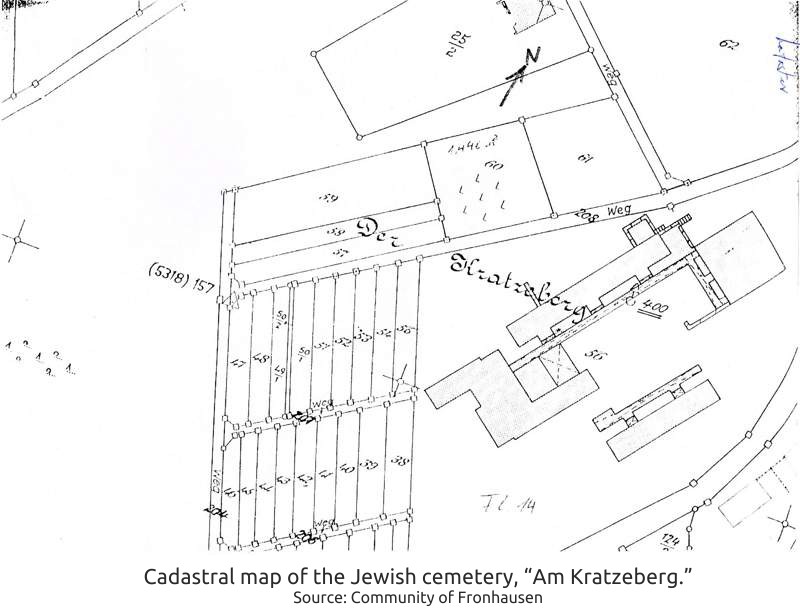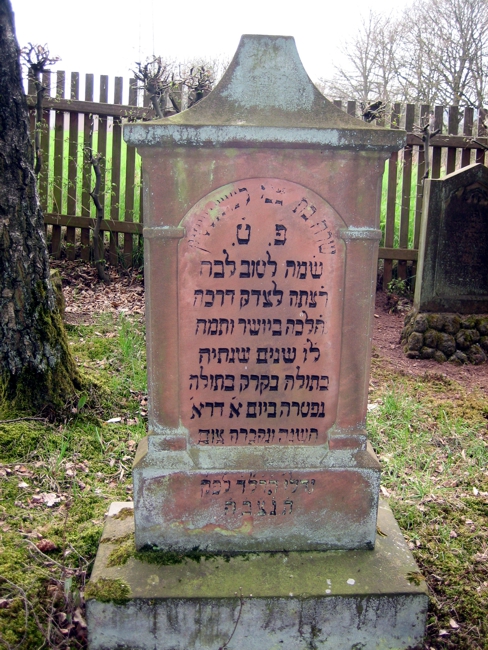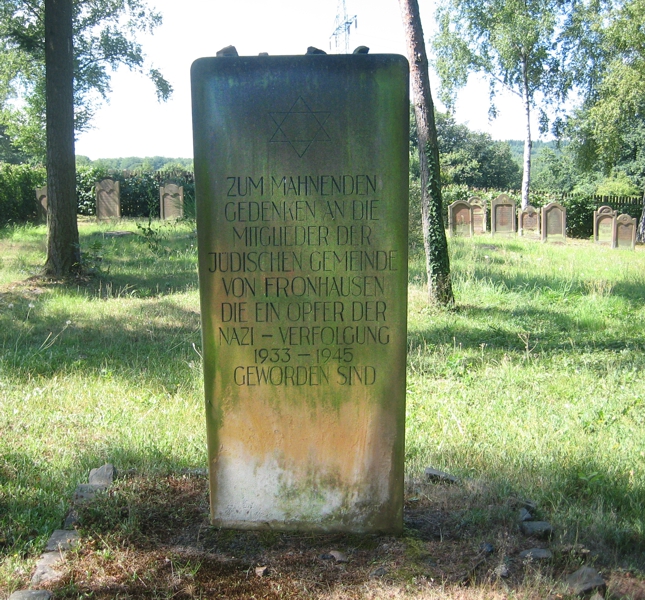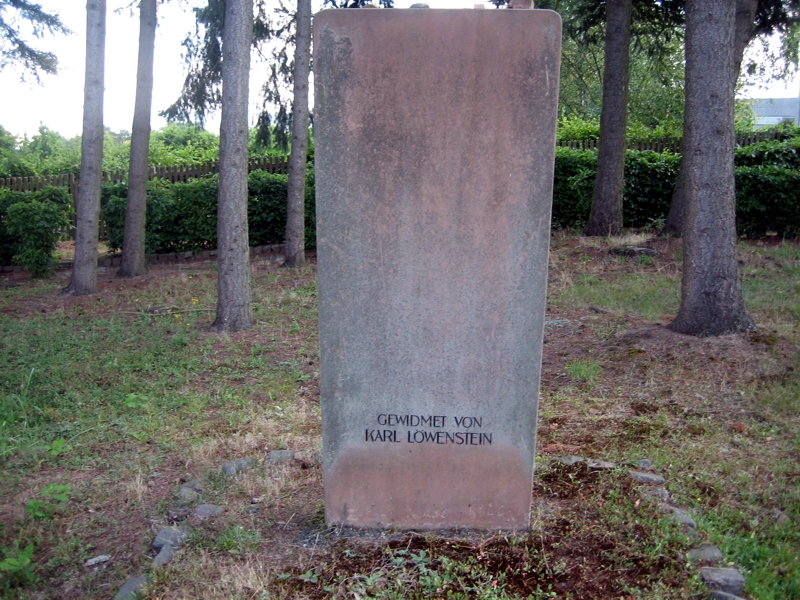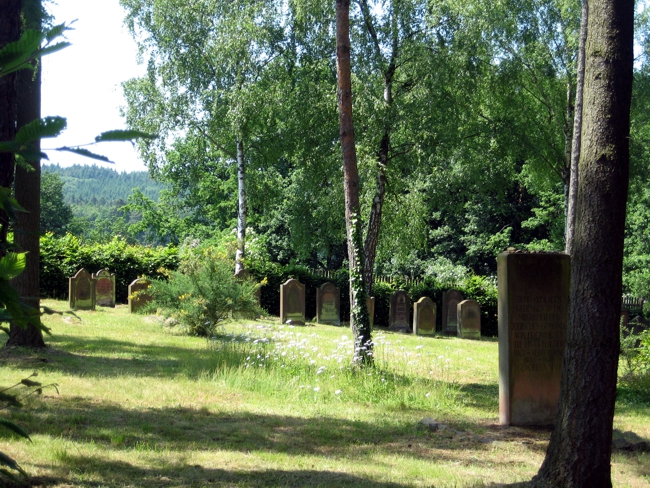by Annemarie Schlag
Location and Description
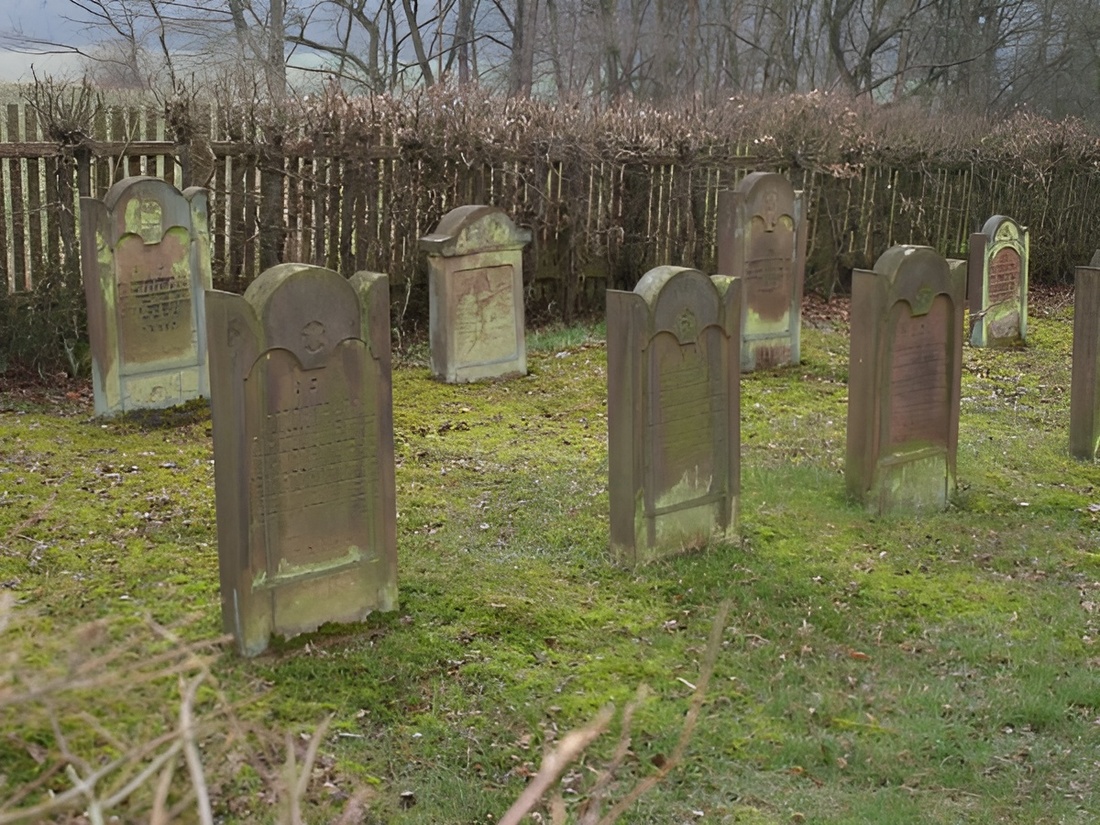 Photo: Hahn 2008, alemannia judaica
Photo: Hahn 2008, alemannia judaica
The horse dealer Simon Löwenstein donated the grounds for the cemetery on “Kratzeberg” to the Jewish Community on August 1st, 1873. Between this date and the closure of the cemetery by the Nazis in June 1940, 42 burials took place here, seven of those burials were children. The first gravestone was set for Sara Löwenstein, who died aged 36 on September 22nd, 1873.
The second burial was the daughter of the property donor, Simon Löwenstein, and his wife, Ester. Their daughter Rosa died on March 26th, 1874, only four and a half months old. The last funeral to be conducted on the site was for Minchen Sonn in 1938. There is no stone for her. Auguste Giedel Löwenstein died on June 21st, 1941. It is unclear whether she was buried in the cemetery in Fronhausen or in the collective graveyard for Jews at the address Alter Kirchhainer Weg in Marburg.
The cemetery was not sold during the Nazi Regime. At the end of the war in 1945, commanders of the American Army ordered that knocked over gravestones be reinstalled. The Jewish Restitution Successor Organization (JRSO), whose finances were overseen by offices in Nuremberg, gained control of the property by decree of the Reparations Department in Giessen. The Landesverband der jüdischen Gemeinden in Hessen (Association of Jewish Communities in Hessen) acquired the property in 1960.
The cemetery was heavily vandalized in March 1986. The perpetrators torn down part of the wooden fence and knocked over 17 gravestones. Two of the stones split down the center. The district administrator put out a reward of 1000 Deutsche Mark for leads to help apprehend the vandals. The cemetery was restored, but they never caught the criminals.
All 39 tombstones are for single graves and are made of sandstone. The stones are carved simply, some with slight ornamentation at the top. The inscriptions are in Hebrew on the front, some have a text in German on the back. Each inscription begins with the burial phrase “Buried here is” in Hebrew. The phrase “May his/her soul be bound in the bundle of life” ends the inscription. Karl Löwenstein, who was born in Fronhausen to Moses I, and Moses’ wife Henriette, née Schott, lived in Berlin from the beginning of the 20th century. A Holocaust survivor, Karl Löwenstein donated a memorial stone for the victims of the Nazis in 1964.
The German inscription can be translated as follows:
In warning exhortation in memory of the members of the jewish community of Fronhausen who fell victim of nazi persecution 1933 -1945
The inscription on the back reads:
Dedicated by Karl Löwenstein
The gate to the cemetery is locked. Visitors can borrow the key from the town administration center (Gemeindeverwaltung.) Visiting is not permitted on Jewish holidays or on Saturdays out of respect for the Sabbath. Male visitors should cover their heads while on cemetery grounds.
All photo credits: Annemarie Schlag, Fronhausen
You can find a list of sources on the website of the Landesgeschichtlichen Informationssystems Hessen.
The Jewish Cemetery lies between the soccer field and the tennis courts, right next to the elementary school on the mountain known as the Stollberg. It is 1400 m2 and is enclosed by a fence and a hedge.
How to get to
The Jewish cemetery is located on the Stollberg between the soccer pitch and the tennis court, in the immediate vicinity of the elementary school. It is 14 acres in size and is surrounded by a fence and a beech hedge.


